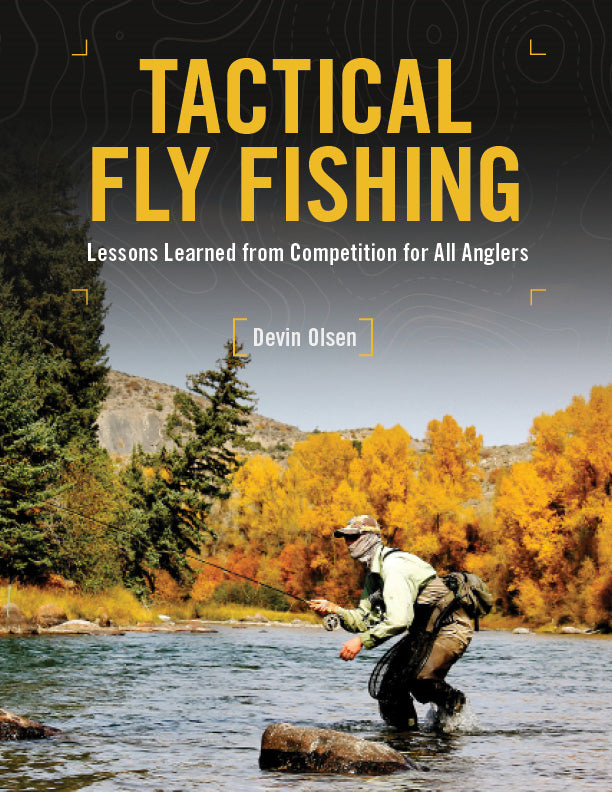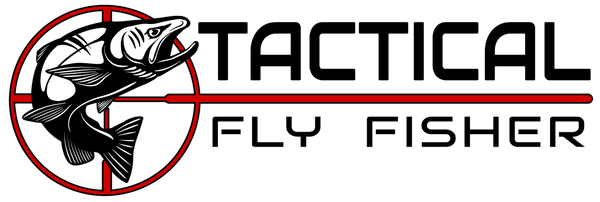
My new book Tactical Fly Fishing is now available
Share
Hi Everyone,
There are lots of you who have already purchased my new book and I certainly appreciate your support. For those of you who haven't heard, Tactical Fly Fishing: Lessons Learned from Competition for All Anglers is now available. You can buy autographed copies of the book in our shop by clicking the blue button below. In case you are wondering what the book is about, let me provide a quick glimpse of what you'll find inside.
One of the challenges I face as a competitive angler is showing up to a river with a short "beat" or stretch of water and being limited to that beat for a 3 hour session. When I arrive I have 30 minutes to scout the beat, rig rods, and make a plan as to how I can best fish the beat in order to maximize the number of fish I catch within the allotted time. There are a lot of variables and observations that I make in order to come up with my plan.
The first chapter of the book is the longest chapter and is dedicated to helping you ask questions and make observations to help answer questions that will help you plan your day of fishing. Examples of these questions might be what is the water clarity? Can I see fish? Is there an active insect hatch? Are there rising fish? What species of fish are in the river? And, what is the water temperature? Based on the answers to these questions, and others in the book, I am able to arrive at flies and strategies that I believe will be successful. By employing a similar approach, you can break out of the mold of fishing the same flies and the same stretch of water that you are comfortable fishing and become more versatile and consistently successful on the water.

Being aware of your profile and shadow on the water is one way to spook fewer and catch more fish.
In chapter 2, I discuss the gear and rigging I use for a variety of methods. I include leader formulas for multiple Euro nymphing rigs, delicate dry fly rigs, streamers, and suspension/strike indicator rigs. I also tackle common rigging questions I'm asked.

Chapter 3 is a bit of a history of my introduction to European styles of nymphing. I cover what I've learned about the pros and cons of European nymphing vs. other styles and why it has been such a breakthrough in and out of competition for myself and others. I also give a basic how to introduction to Euro-nymphing.

Brian Simmons Euro nymphs a run on an Oregon river.
Chapter 4 is a quick tangent into the world of fisheries biology. In it I talk about ecological fitness, optimal foraging theory, and the cost benefit analysis which trout must perform when choosing when and where to hold. If you've ever though of trout swimming on an escalator, this is where your thoughts will be illustrated.
Chapters 5 through 10 are where the theoretical meets the practical. Each of these chapters covers a different water type. The water types include pocket water, riffles, runs, pools, glides, and bankside lies. I describe each water type and what makes them different in terms of when, where, and how I fish them. I include rigs and casts that perform best in certain situations and share experiences from competitions. At the end of each chapter there are one or more case studies where my teammates and I fish a stretch of water. I describe and/or diagram the rigs and approaches we used and where we were and were not successful. My hope with these case studies is to provide thought provoking exercises which can inform your strategy when you transition from one water type to another.

This photo is from a diagram on one of the pocket water case studies I did with my teammate Glade Gunther.
The last chapter (11) shares the recipes for flies which make up the bulk of what I use when I fish rivers at home or abroad.

A few Lite Brite Perdigon variations from the final chapter.
I hope that everyone who buys the book gleans useful information that helps them enjoy more success on the water.
Devin
